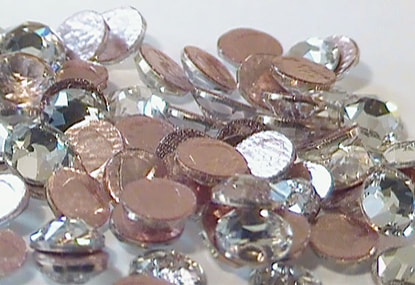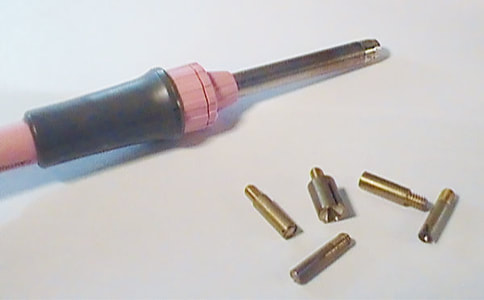|
Generally, you can choose several different methods when attaching rhinestones to fabric. Usually, the most popular way is using glue. You can also use metal settings or sew the crystals into place. Another method is using hot fix rhinestones. Heat Activated Rhinestones Like sew-on and glue on rhinestones, hotfix crystals have a flat back rather than a pointed back. On the backside, manufacturers coat the rhinestone with a heat-activated adhesive. Once you heat the glue and apply the crystal, you have a strong and durable bond. Using heat activated crystals offers several great advantages:
Application Methods
Hotfix rhinestones require a specific temperature, pressure, and time for a successful application. To activate the glue, most manufacturers recommend a temperature range of 250 degrees F - 340 degrees F. For those of you who use Celsius, that’s 120 degrees C – 170 degrees C. For proper adhesion, the glue needs to be liquid enough to soak into the base material. Typically, the temperature, pressure, and time depend on the equipment you’re using to adhere the crystals. Generally, you can use one of three tools to activate the glue:
Unfortunately, irons with vents don’t provide a flat surface and consequently prevent adequate pressure for proper adhesion. Also, water and steam can negatively affect the hotfix application. Thus, for proper application, you’ll need to use a non-steam iron. Comparatively, a hotfix wand is ideal for home use. You can find a variety of manufacturers including the name brands BeJeweler and Kandi. Wands come with different screw-on tips to accommodate different size rhinestones. The wand can pick up a rhinestone and heat the glue. Once you see the glue begin to bubble, you simply tap the rhinestone onto the fabric. Another tool for applying heat activated rhinestones is a heat press. Although on the pricier side, you may want to consider buying one if you’re blinging many garments. A heat press delivers pressure and high heat for a preset time. Thus, you’ll get professional results for your rhinestone application. One other tool you may want to consider using with an iron or heat press is transfer paper. Transfer paper allows heat to pass through without melting. With a tacky side to hold your embellishments in place, you can create intricate and detailed designs. It’s also transparent making it easy to view your design before applying. A Few Considerations When Using Hot Fix Rhinestones First, always pre-wash your fabric before you start. This will remove any chemical finishes that may interfere with the absorbency of the glue. Moreover, the quality of the base material and the size of the rhinestone will affect the bond. Keep in mind also, that some fabrics are just not suitable for hotfix applications. These include very tightly woven textiles, smooth leather or smooth imitation leather, and thin fabrics like organza. In addition, those fabrics with water-repellent treatments, easy-to-care treatments, or softening agents may not be suitable. To check the fabric for hotfix application, you can do the water droplet test. Apply several drops of water to the fabric. If the fabric absorbs the water droplet quickly, you can use hot fix rhinestones. However, if the water pearls or if the material absorbs the water slowly, you can’t use them. Ready to start your bling project? Rhinestones Etc. has a huge inventory of high-quality rhinestones at competitive prices. We offer fast processing times so you get your stones quickly. Plus. We have excellent customer service. Browse our online store to find your perfect rhinestone color.
0 Comments
Your comment will be posted after it is approved.
Leave a Reply. |
KarenI have been adding bling for over 20 years. Through my projects, I hope you find inspiration. Categories
All
Archives
July 2024
|
Home About Policies Return Shipping
Contact Us Size Chart Privacy Products Reviews
Copyright 2024 Rhinestones Etc. All rights reserved.
Contact Us Size Chart Privacy Products Reviews
Copyright 2024 Rhinestones Etc. All rights reserved.



 RSS Feed
RSS Feed